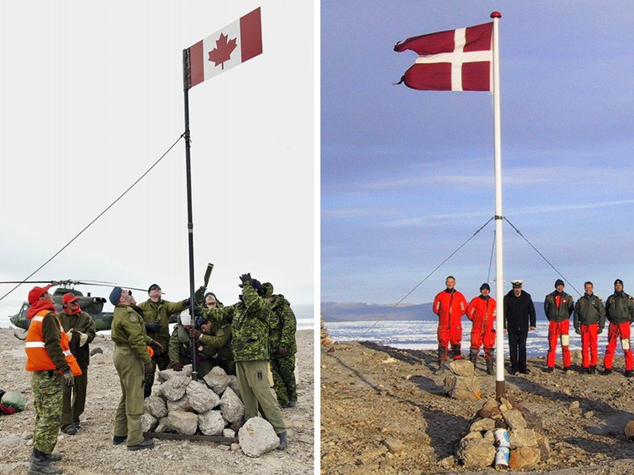India has border disputes with Pakistan, Bangladesh, China, Nepal, Bhutan, and Myanmar. Are India’s neighbours particularly unfriendly? Is India necessarily so honest that we must trust the map that the Indian government provides us?
In reality, any line on the world-map—depending on the scale of the map and the kind of the pen used—represents a distance of hundreds of meters. Those who say that they would not compromise on even an inch of the land—as I was indoctrinated to believe in—are ruthless militants against reality and objectivity.

There is hardly a country on the planet that hasn’t a border problem. There is a reason why international borders are the way they are. The nation state is a modern construct. Borders have historically changed not based on certain property rights, but based on “might is right.” Moreover, there was nothing like GPS systems until the recent past. Different countries have had different maps, sometimes widely different, sometimes none at all.
In today’s world, the only way to resolve border problems is through negotiations, compromises, and friendliness. These are not signs of weaknesses, but an acceptance of the reality.
While border problems exist, they should not mean that you cannot trade or move around freely. You can freely drive from France to Germany without even knowing that you crossed the border. There is no agent or army whatsoever. In the past—unknowingly—I went into Slovakia (by train from Austria) and Switzerland (by train from Italy) without proper visas. Thankfully they have better uses for their manpower than line them up at the border to constantly harass people.
Moving around isn’t easy in case with South Asia (particularly, India and Pakistan), with people and the governments unnaturally—actually insanely—attached to the borders, making South Asia one of the most closed and schizophrenic in the world.
A lot of Europe is unrecognizable from what it was before the First World War. Germany had to exchange vast areas with France and Poland under pressure. Finland lost a lot of its land to the USSR. They don’t keep worrying about what they don’t control. The world moved on.

There is a long running border dispute between Greenland and Canada. When Canadian forces go the area of “conflict,” they plant a Canadian flag and leave some Canadian whisky bottles. When Danish forces go to the same area, they do something similar. At the scene of action, it is all friendly. The dispute never gets any worse than exchanging some free whisky bottles.
The “official” border on the map between the US and Canada is a straight line, which often means that certain areas belonging to a country are not accessible from its own border. The straight line has left many local complexities, issues that no one worries about. Most of the border is unguarded. In rare areas where the border is guarded, the two sides work together.
China has major issues with Taiwan, but it hasn’t stopped Taiwan from investing a huge amount of money in China. People can freely travel between the two countries, despite that China does not even officially recognize Taiwan.
For the length of it border, India is among the most closed country in the world. There is extremely restricted land-access to Myanmar, Bangladesh, Pakistan and China, which has separated families and trading contacts that had historically existed. For all practical purposes there is not even a direct flight between India and Pakistan. Even with relatively friendly countries—Bhutan and Nepal—access points are limited and unfriendly.
Indians must ask if this is more to keep Indians imprisoned by the Indian government.
Every evening at the Wagah border crossing, Indian and Pakistani armies do an orchestrated, senseless ritual of hate that includes people of the two sides. Given that this is orchestrated with the two armies working together to synchronize their steps, it is spineless, wasteful, and inhuman. The insanity of this ritual is unparalleled in the world.
The situation with visa-free travel is very similar. Indian consulates around the world are infamous for being extremely difficult and bureaucratic.
And Indian passport is among the worst passports to own. It ranks 159th out of 199 countries. If you want to travel to Europe you must fly to one of the major Indian cities to get a visa. Timidly Indians line up for hours outside embassies in Delhi or Mumbai.
Indian government has failed to negotiate humane and visa-free travel for its citizens, making it one of the worst countries to have a passport of.
Indians must realize that it is one of the most closed countries in the world, with its citizens virtually held prisoners by its government. Indians must give up their superstitious attachment to borders and must insist that the government open up road access and visa-free regime with neighboring countries, and the rest of the world. Trade and exchanges of people must be open, while border problems are sorted out in the boardrooms.
